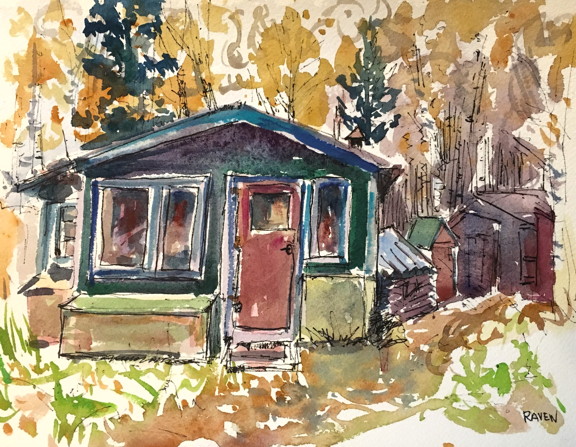
18″ x 24″ $1200.
sold
painting by Raven on canvas
Claude left in the last week of May for Texas! He is excited for this new adventure. One of my Ravenista’s purchased him for a gift for a friend. Isn’t that the best kind of present? Claude is looking forward to greeting his new Bear-Tamer every day and staying wild.









